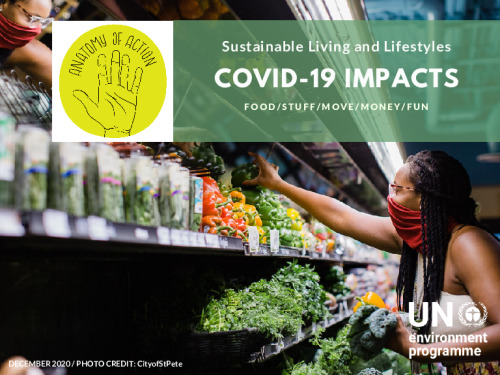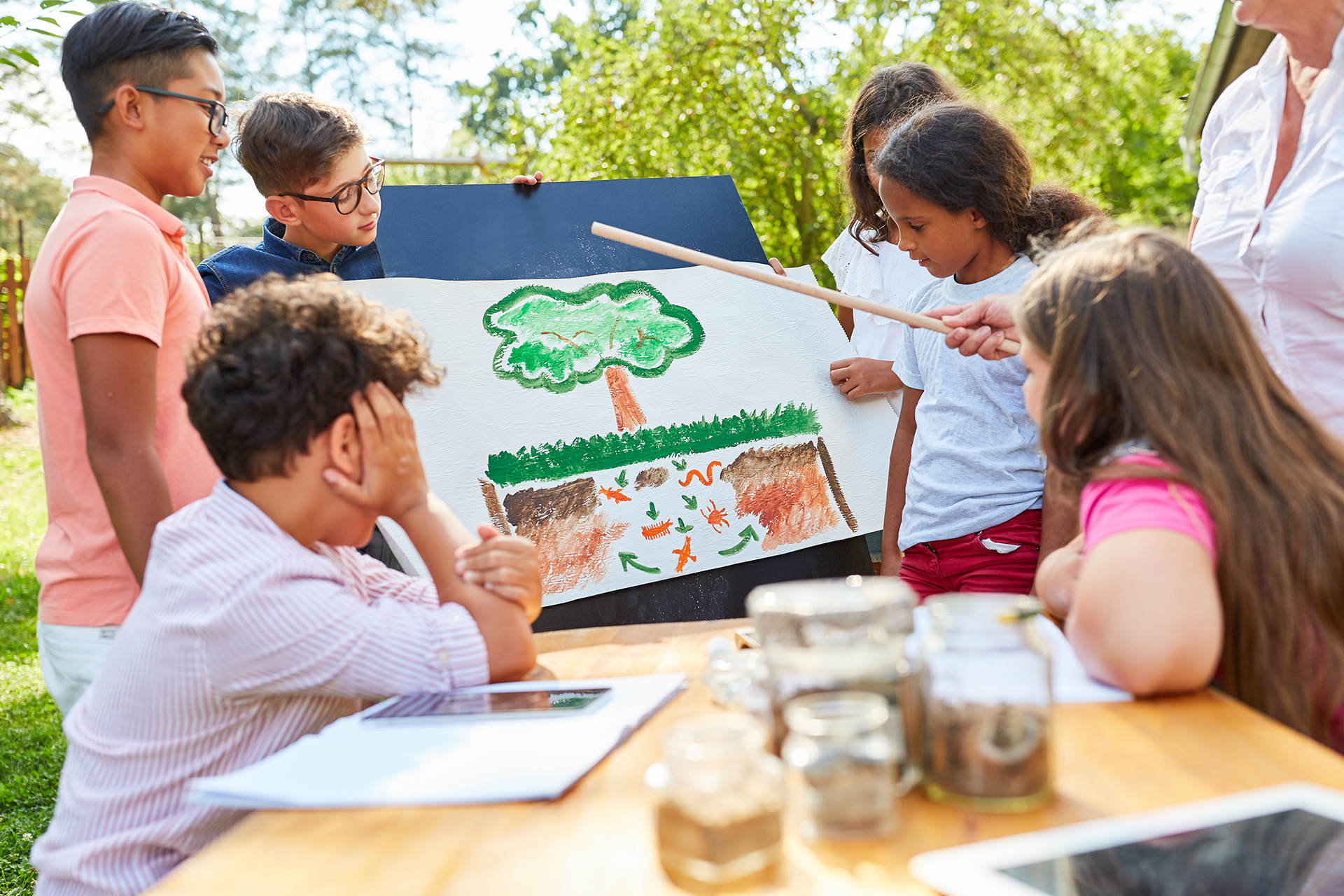
Sustainable Lifestyles & Education Programme
Anatomy of Action
A handy action set for everyday sustainable living
The Anatomy of Action (AoA) activates people to contribute to Sustainable Development Goal 12 (SDG 12) on responsible consumption and production. It outlines the top level changes any individual can make to support the growing shift to global sustainability. All visual assets are under Resources & Downloads at the end of this page.
UNEP developed the AoA toolkit with the UnSchool of Disruptive Design, founded by 2016 UN Champion of the Earth Leyla Acaroglu as a contribution to the One Planet Network's Sustainable Lifestyles and Education Programme.
Click to access the AoA: Data Valdiation Report
5 Everyday Areas of Action
We all eat food, buy stuff, spend money, move in our communities, and like to have fun. These are the 5 main Lifestyle areas where each human has an impact and where you can make choices to have a more positive impact on the planet!
The AoA separates lifestyles into 5 areas of action: food, stuff, move, money and fun based on scientific evidence.
These 5 areas form part of our everyday living needs and lifestyle choices that hold the potential, if enough people swap their actions, to support the global changes we need to achieve the Sustainable Development Goals.
Our collective future is dependent on the cumulative outcome of our actions today!
Social Media Challenge
The Anatomy of Action is also disseminated as a 15-day social media challenge that engages organisations, global influencers and the public to encourage their communities to make sustainable lifestyle changes. Follow #AnatomofAction on Instagram and LinkedIn.
The challenge target youth around the world - the next generation of consumers and change-makers - to show that sustainable living is easy, cool and fun.
The challenge introduces one action every day and can be reactivated at any time. You can also apply the Anatomy of Action to lifestyle events, festivals, webinars, competitions and other challenges.
Actions anyone can take

Food
PROTEIN SWAPS - Reduce meat and animal product consumption habits and adopt a more plant-based diet
USE ALL YOUR FOOD - Get organic waste out of trash heaps and landfills to reduce methane, improve soil fertility, and increase equitable access to fresh food
GROW YOUR OWN - Grow your own food and connect to where it comes from in order to save money and to reduce transport, packaging, and food waste

Stuff
BEYOND BUYING - Consider what you need and buy products that will last longer, be used multiple times, and are intended to be in use for as long as possible before being remanufactured or recycled
FASHION SLOW DOWN - Buy fewer and better clothes, stay away from fast fashion that mass produces at the cost of environmental and human justice
DITCH DISPOSABLES - Refuse everyday products which cannot be reused
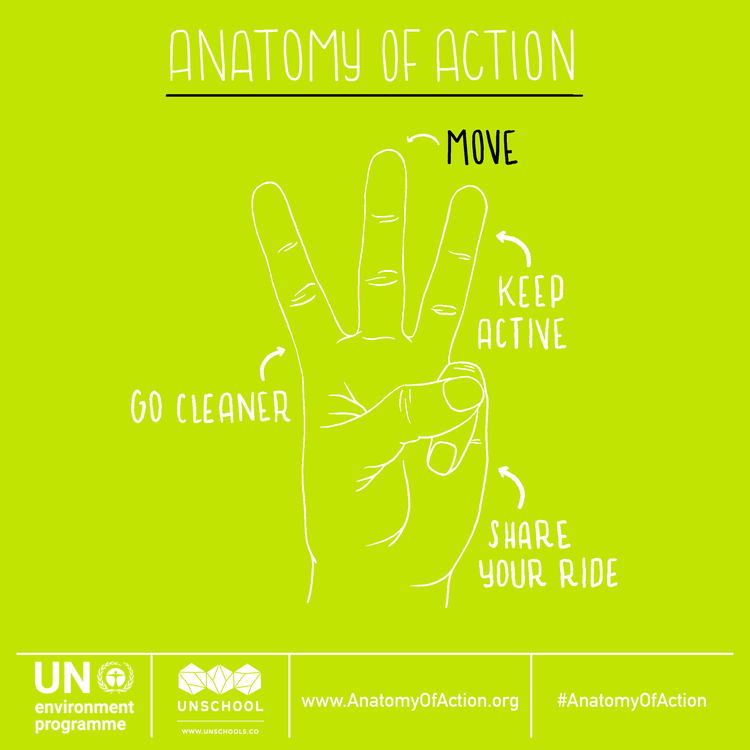
Move
KEEP ACTIVE - Keep or take up walking and cycling to work and advocate for your government and local businesses to provide more sustainable and safer public transport options
SHARE YOUR RIDE - Continue or opt for public and shared transport instead of driving, and advocate for more options
GO CLEANER - Swap to options like electric vehicles, cleaner fuels, and fewer kilometers to reduce your transport footprint

Money
ETHICAL INVESTING - Use your principles to guide investing and consider socially and environmentally responsible options
DIVESTMENT - Actively swap your financial institutions or services to more sustainable options
ENERGY POSITIVE HOMES - Enhance your comfort, save energy and money by adapting your home and your habits to be more efficient

Fun
ENJOY THE JOURNEY - Staying local can reduce your carbon footprint, help local economies, and can be more cost effective. When you do go the distance, stay longer and choose better products
STAY CURIOUS - Embrace a life of constant learning, adventure, and curiosity, and keep an open mind
CHOOSE EXPERIENCES - Consider spending more time and resources on the experiences that add value to your life
Impact and results
In March 2021, the Anatomy of Action launched a global challenge across 60+ countries with #AnatomyofAction reaching +4,000,000. To access all materials from the March 2021 challenge:
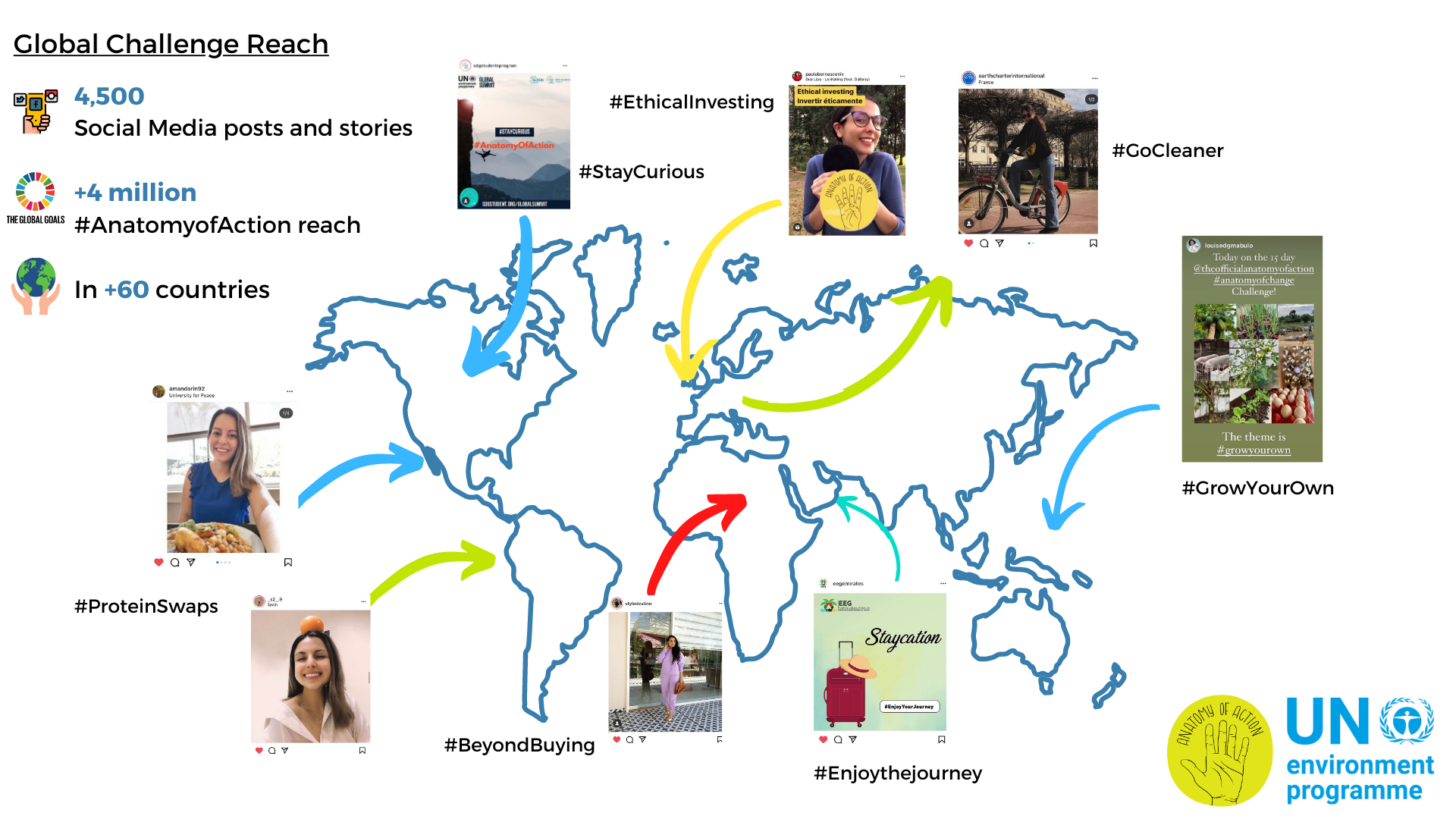
Resources & Downloads
Simply Live Better:
This concept note presents the context and importance of young people as the key drivers in sustainable lifestyles and behavior change - identifying the events and tracks the Sustainable Lifestyles and Education team, through the Anatomy of Action, will work toward in 2021/2022.
Anatomy of Action Challenges 2020/2021
The Anatomy of Action has been reactivated as a social media challenge all over the world, from Latin America and in partnership with Universidad de los Andes, with the UNEP Major Group for Children and Youth, and with a focus on Africa in the 2021 #MadeInAfrica challenge.
The Anatomy of Actions aims to engage 10 million young people by Stolkholm + 50. Follow the Anatomy of Action around the world with this interactive map. Click here!
Desktop Reseach: Covid-19 impacts Sustainable Living and Lifestyles
This desktop research reflects how COVID-19 is influencing people’s lives and lifestyles around the world, and in turn how “COVID lifestyles” affect and will affect the environment.
Desktop Research: Lifestyles Impact on Nature and Biodiversity
This desktop research looks into how our lifestyles impact nature and biodiversity. It aims to understand, address and eventually reduce the impact of a few lifestyles areas which have a massive impact on habitat and biodiversity loss.

Anatomy of Action Resources
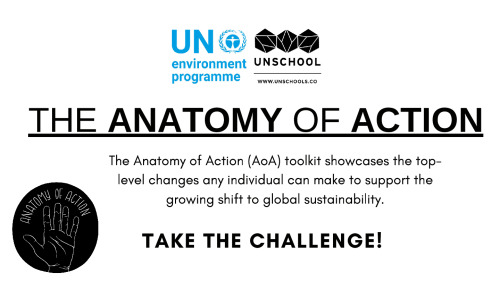
What action to take? Don't know what to post? Here's some inspiration
Social media inspiration flyers on food, stuff, move, money and fun

